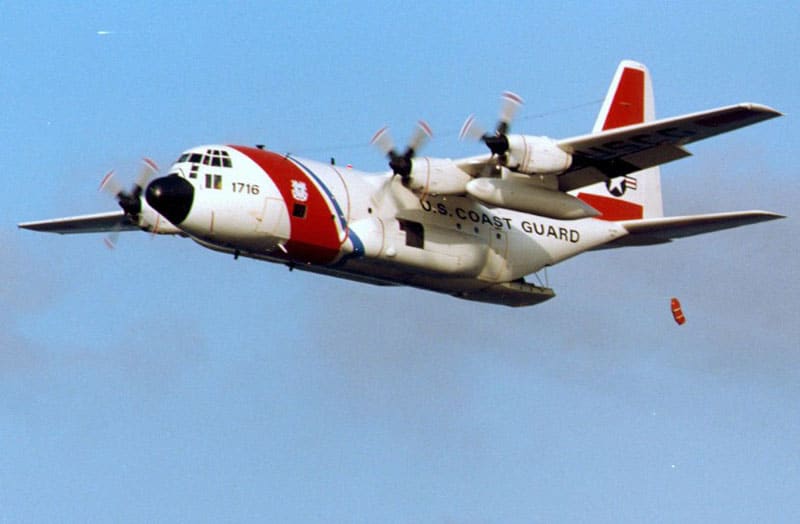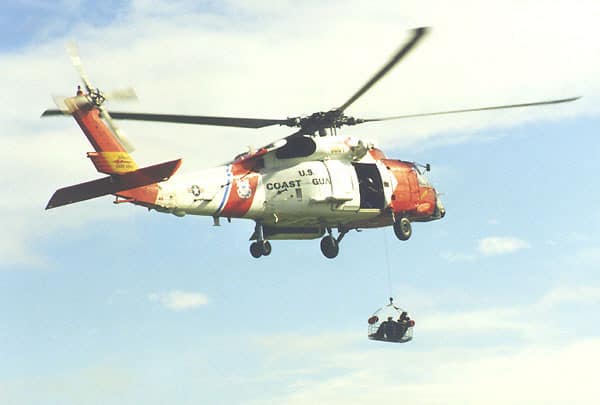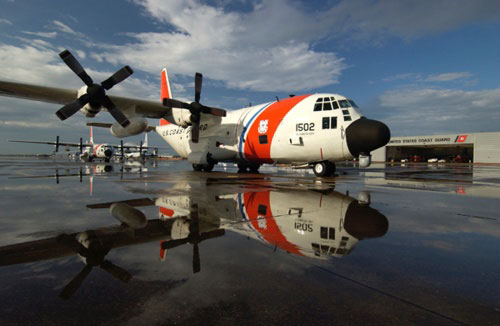In 1934, the Coast Guard Air Station St. Petersburg was commissioned at Albert Whitted Airport located in downtown St. Petersburg, Florida. Charged with Search and Rescue responsibilities, the Air Station became the base of operations for various amphibian aircraft and helicopters over the years. In 1976, to meet operational commitments, it was desired to place four HC-130 Aircraft in the southeastern geographic area of the United States. To accommodate this Air Station St. Petersburg was moved to the St. Petersburg/Clearwater International Airport 11 miles to the north.
Coast Guard Air Station Clearwater has a rich history, and its operations have been at the heart of significant events in Florida and the Caribbean for many years. In the early 80s, its high operations tempo earned Clearwater two Coast Guard Meritorious Unit Commendations, the Humanitarian Service Medal, and the Coast Guard Unit Commendation. It was during this time that the Air Station provided crucial support to the surface fleet during the Cuban boatlift. Shortly thereafter Clearwater answered the call to duty during operation URGENT FURY- the Grenada rescue mission – and was awarded the Coast Guard Meritorious Unit Commendation for its efforts. Later that same year a second Coast Guard Meritorious Unit Commendation was awarded to the Air Station for OPERATION WAGON WHEEL, an international drug interdiction effort. In 1986 following on the success of the previous operation, Clearwater conducted OPERATION HUNTER. This drug interdiction effort planted the seeds for what is today’s OPBAT
Clearwater became the Coast Guard’s largest Air Station in 1987 with the expansion of the drug interdiction mission; “Operation Bahamas, Turks, and Caicos” or OPBAT. This large ongoing mission was initially conducted using HH-3F helicopters which were replaced with 12 HH-60J helicopters and an additional three HC-130 aircraft to support the increased law enforcement efforts. These operations boosted personnel strength to over 500 men and women.

The C-130s perform numerous missions in support of Search and Rescue, Marine Environmental Protection, and Drug and Alien Interdiction. The aircraft is an ideal multi-mission aircraft using palletized operational and detection systems with over 14 hours of airborne endurance. Clearwater C-130s have deployed to many of the contiguous 48 states, Alaska, Hawaii, the Caribbean, Central and South America, Europe, and many other parts of the world.
The Air Station is also home base for two AN/TRC-168 Emergency Communications Vans capable of a variety of communications. The units are normally transported by C-130 and their equipment can provide essential communications to any emergency organization. The vans are designed for continuous service under severe weather conditions and were deployed to assist in rescue relief efforts associated with hurricane Hugo, as well as other natural disasters.

Air Station Clearwater HH-60J helicopter aircrews presently fly an average of over 400 Search and Rescue cases each year along the coasts of Florida, the Bahamas, and beyond.
The 90s were no less dramatic for the men and women of Clearwater. In 1991 unit C-130s responded rapidly to fly personnel and supplies in and out of the combat theater in support of operation DESERT STORM. During the Haitian uprising in 1992, Clearwater crews evacuated American embassy personnel and transported U.S. Special Forces into Haiti. When south Florida and Louisiana were devastated by hurricane Andrew, Clearwater crews flew missions round the clock transporting hundreds of tons of badly needed supplies. In March 1993 the “Storm of the Century” struck Florida leaving numerous sunken vessels in its wake. Air Station crews launched at the height of the storm and pulled 62 people from the water in what was the busiest search and rescue day in the Air Station history. In the summer of 1994 air crews participated in a massive SAR effort which located and rescued 34,568 Cubans and 23,389 Haitian migrants from the waters of the Caribbean.
In 1997 President Clinton announced a renewed effort towards the War on Drugs, and Clearwater responded as part of operations FRONTIER SHIELD, GULF SHIELD, and FRONTIER LANCE. Those operations were aimed at stemming the flow of illegal drugs and migrants and spanned from the Leeward Islands of the Caribbean to the southern coastline of Texas. The Coast Guard set new records for both drug seizures and arrests.
Hurricanes Katrina and Rita struck in 2005 and Air Station Clearwater was the hub for Coast Guard C-130 operations. Five Clearwater C-130s were supplemented by C-130s from the Aircraft Repair and Supply Center and the Elizabeth City, Sacramento, and Kodiak air stations. A support plan, often using immediate feedback from returning sorties, was developed. The supply warehouse and hangar were delivery points for consumables. Contracts with multiple vendors in the Central/South Florida area were secured to buy bottled water by the pallet. Based upon lift capacity arrangements for delivery of up to 20 pallets per day was made and loaded directly onto waiting aircraft. Likewise thousands of MREs were procured and delivered as were blankets, diapers and consumables. In addition first responder items including heavy equipment such as forklifts, ground handling equipment and generators were flown to CGAS New Orleans and ATC Mobile.
It was just shy of four weeks -post Katrina- before FEMA supply lines were established to the point where Coast Guard procured/donated and delivered supplies were no longer required. The breadth of the C-130 operation and the multiple capabilities of the C-130 was demonstrated in that in addition to relief supplies the C-130s served as communications platforms, conducted surveillance missions, transported DART teams, MSST units, fuel cells, medical personnel and supplies, evacuated stretcher patients out of the area to receiving hospitals, and even 100 buoys were flown in from CGD9 for use by Sector Mobile.


